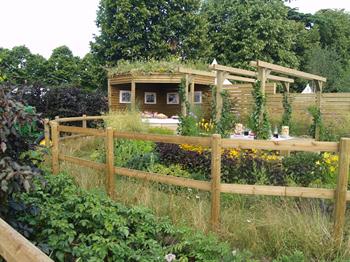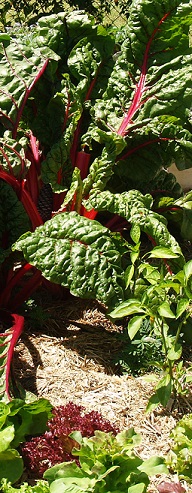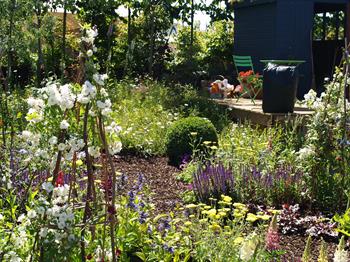Take your Permaculture design skills to the next level
A Course for
- Graduates of other Permaculture courses
- Garden Designers, Landscape Architects, Horticulturists, Ecologists, or other professionals who understand aspects of permaculture; but want to take their knowledge to the next level.
This is a great course for those wanting to develop a deeper understanding of the principles of permaculture and sustainability. Students will learn how to design, implement and consult on a wide range of topics associated with environmentally friendly practices.
Course Content and Structure
 There are 10 lessons in this course:
There are 10 lessons in this course:
- Evaluating Design Strategies
- Understanding Patterns
- Water
- Earthworks
- Humid Tropics
- Dry Climates
- Temperate to Cold Climates
- Planning Work
- Costing
- Sustainable Systems
Course Aims
- Evaluate appropriate design strategies for a specific development site.
- Explain the relationship between a Permaculture system and natural patterns occurring in your local area.
- Develop strategies for the management of water in a Permaculture design.
- Determine earthworks for the development of a Permaculture system.
- Design a Permaculture system for the humid tropics.
- Design a Permaculture system for a dry climate.
- Design a Permaculture system for a temperate to cold climate.
- Determine planning strategies for the development of a Permaculture system.
- Prepare cost estimates for a Permaculture development plan.
- Explain alternative sustainable systems practiced in various places around the world.
TAKE THE NEXT STEP

There are many different ideas about how to be more sustainable, and we can learn a lot more about how to do better permaculture, by studying them all.
You will find different people promoting different concepts with great vigour and enthusiasm, and in most cases, these concepts will have something valuable to teach you. Many are quite similar in approach, often being just variations of a similar theme. Each approach will have its application, but because it worked for someone else does not necessarily mean it will work for you. Some of these concepts are explained below and will be discussed in more detail later in the course.
Low Input Farming Systems
This approach is based on the idea that a major problem is depletion of resources. If a farmer uses fewer resources (e.g. chemicals, fertiliser, fuel, money, manpower), farm costs will be reduced, there is less chance of damage being caused by waste residues or overworking the land and the world is less likely to run out of the resources needed to sustain farming.
Regenerative Farming Systems
This seeks to create a system that will regenerate itself after each harvest. Techniques such as composting, green manuring and recycling may be used to return nutrients to the soil after each crop. Permaculture is currently perhaps the ultimate regenerative system. A Permaculture system is a carefully designed landscape which contains a wide range of different plants and animals. This landscape can be small (e.g. a home garden), or large (e.g. a farm) and it can be harvested to provide such things as wood (for fuel and building), eggs, fruit, herbs, and vegetables, without seriously affecting the environmental balance. In essence, it requires little input once established and continues to produce and remain sustainable.
Biodynamic Systems
This approach concentrates on mobilising biological mechanisms. Organisms such as worms and bacteria in the soil break down organic matter and make nutrients available to pastures or crops. Under the appropriate conditions, nature will help dispose of wastes (e.g. animal manures), and encourage predators to eliminate pests and weeds.
Organic Systems
Traditionally this involves using natural inputs for fertilisers and pest control, and techniques such as composting and crop rotation. In Australia and many other countries, there are schemes which "certify" produce as being organic. These schemes lay down very specific requirements, including products and farming techniques which are permitted, and others which are prohibited. In Australia, you can find out about such schemes through groups such as the Biological Farmers Association (BFA) or the National Association for Sustainable Agriculture (NASAA). See directory for addresses.
Conservation Farming
This is based on the idea of conserving resources that already exist on the farm. It may involve such things as identifying and retaining the standard and quality of waterways, creek beds, nature strips, slopes, etc.
Hydroponics
This approach involves separating plant growth from the soil, and taking greater control of the growth of a crop. This increases your ability to manage both production and the disposal of waste. Hydroponics is not a natural system of cropping, but it can be very environmentally friendly. A lot of produce can be grown in a small area; so despite the high establishment costs, the cost of land is much less allowing farms to operate closer to markets. In the long term, a hydroponic farm uses fewer land resources, fewer pesticides, and is less susceptible to environmental degradation than many other forms of farming.
Matching Enterprise with Land Capability
Some sites are so good that you can use them for almost any type of farming enterprise, for any period of time without serious degradation. Other places, however, have poor or unreliable climates or infertile soils and might only be suitable for certain types of enterprises or certain stocking or production rates. If you have a property already, only choose enterprises that are sustainable on your land.
Genetic Improvement
This principle involves breeding or selecting animal or plant varieties which have desirable genetic characteristics. If a particular disease becomes a problem, you select a variety that has reduced susceptibility. If the land is threatened with degradation in a particular way, you should change to varieties that do not pose that problem.
Polycultures
Many modern farms practise monoculture, growing only one type of animal or plant. With large populations of the same organism, though, there is greater susceptibility to all sorts of problems. Diseases and pests can build up to large populations. One type of resource (required by that variety) can be totally depleted, while other resources on the farm are under-used. If the market becomes depressed, income can be devastated. A polyculture involves growing a variety of different crops or animals, in order to overcome such problems.
Integrated Management
This concept holds that good planning and monitoring the condition of the farm and marketplace will allow the farmer to address problems before they lead to irreversible degradation. Chemical pesticides and artificial fertilisers may still be used, but their use will be better managed. Soil degradation will be treated as soon as detected. Water quality will be maintained. Ideally, diseases will be controlled before they spread. The mix of products being grown will be adjusted to reflect changes in the marketplace (e.g. battery hens and lot-fed animals may still be produced but the waste products which often damage the environment should be properly treated, and used as a resource rather than being dumped and causing pollution).
PERMACULTURE PLANNING
The term “Permaculture” is derived from the idea of “permanent agriculture”.
In its strictest sense, Permaculture is a polyculture system of agriculture based on perennial or self perpetuating plant and animal species which are useful to man. In a broader context, Permaculture is a philosophy which encompasses the design and establishment of environments which are harmonious, highly productive and stable. These environments provide food, shelter, and energy, as well as supportive social and economic infrastructures, in a sustainable manner.
In comparison to modern farming techniques practised in most modern civilisations, the key elements of Permaculture are low energy and high diversity inputs. The design of the landscape, whether on a suburban block or a large farm, is based on these elements. It also takes ethical issues into consideration.
Design is required to place plants, structures, and animals in relation to each other so that their functions and yields are enhanced. Permaculture design skills include observation, deduction, analysis, mapping, pattern reading, and experience.
WHY STUDY THIS COURSE?
This course will help you to gain knowledge over and above anything taught in a Permaculture Design Certificate. It gives the graduate an edge as a consultant or when designing their own permaculture system.
After completion of the course
Students will have a greater understanding of the different systems associated with permaculture and environmentally sound practices. This knowledge can be applied to urban and rural areas, large or small sites.